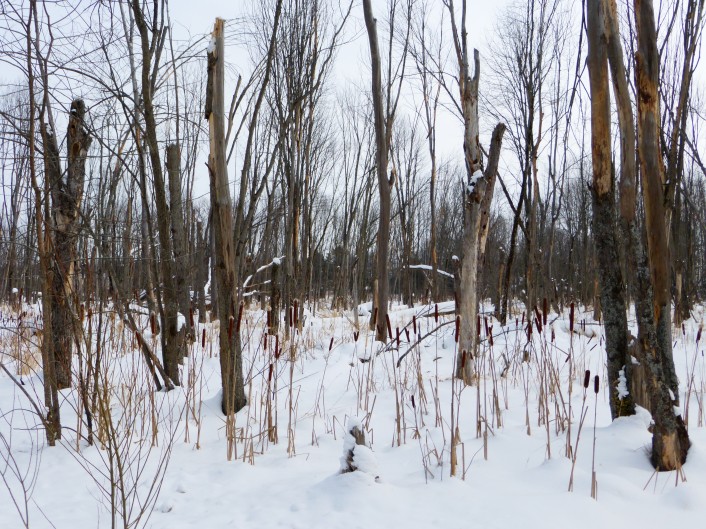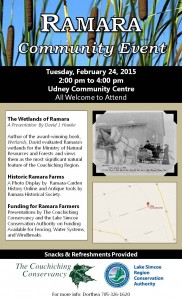The Couchiching Conservancy and the Lake Simcoe Region Conservation Authority are teaming up to highlight the relationship between farmland and wetlands in Ramara Township.
They also want to help farmers and ranchers tap into funding available for fencing and water systems on private land that will help improve farm operations at the same time that they protect water quality.
The two groups are holding an event at the Udney Community Centre Feb. 24 from 2-4 p.m. for farmers, ranchers and anyone interested in the natural and human history of the Township. Participants will come away with an enriched understanding of Ramara’s unique role in the Lake Simcoe watershed.
The keynote speaker will be David J. Hawke, author of the book Wetlands, which won the Outdoor Writers of Canada award. Hawke has spent many days in Ramara’s wetlands, conducting evaluations for the Ministry of Natural Resources and Forests. He views them as one of the most significant natural features of the Couchiching region and, “the most productive and beneficial habitat we have.”
The Conservation Authority has calculated that today, 25 per cent of Ramara Township’s landmass within the Lake Simcoe watershed is wetland, compared to the national average which is 14 per cent. In addition, there is at least that much wetland within the portion of watershed draining into Lake Couchiching and the Black River.
“When Ramara was first surveyed, it was thought to be worthless because of the amount of swampland that was in the Township, said Rick McNamee of Carden-Ramara History Online. “In fact, after pioneers cleared and drained the swamps, they found they had some of the best agricultural land in Ontario County.” Over 85 per cent of original wetland has been converted to other uses in southern Ontario.
McNamee will be attending the event, with a photo display of historic Ramara farms, along with the Ramara Historical Society who will have antique tools on display.
No environment is static, and while humans hasten the rate of change, the farmland in Ramara now provides an important niche for another disappearing habitat: grassland. Threatened and endangered species, such as the Bobolink, Meadowlark, and Barn Swallow all depend upon these working grasslands. From a conservation perspective, the challenge for Ramara is to find a balance between farmland and wetland, and not view either as the enemy. We hope you will leave the afternoon with fresh insights and ideas.
Food and refreshments will be provided courtesy of Mariposa Market. Contact Dorthea for more information (705) 326-1620.
Written by Dorthea Hangaard.


